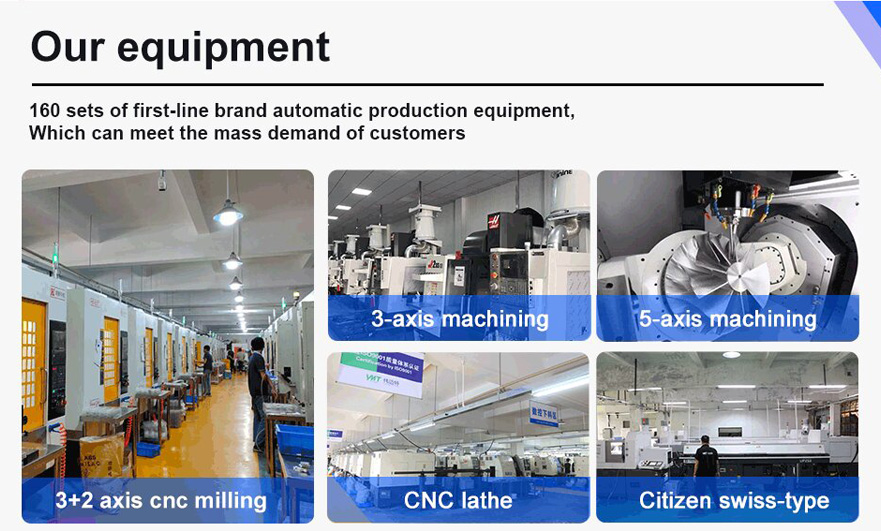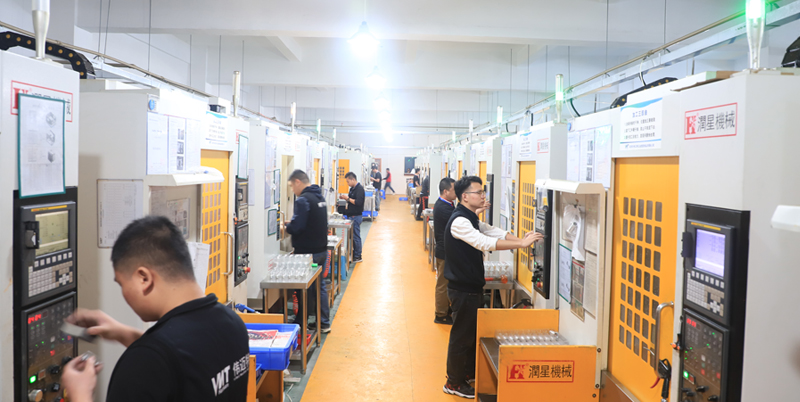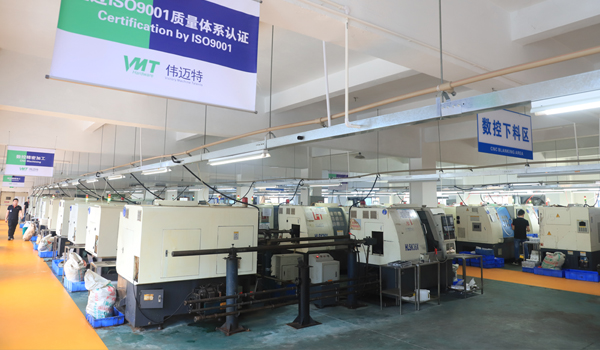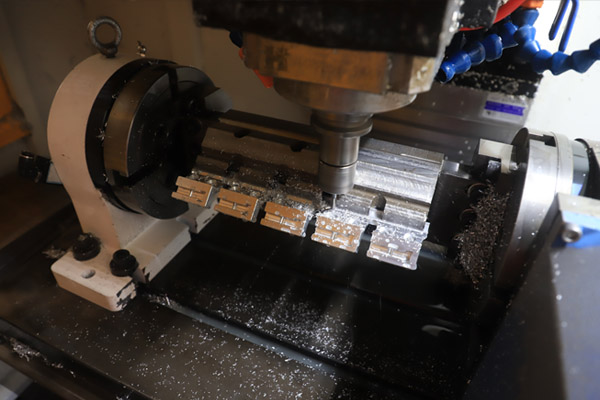15 years one-stop China custom CNC machining parts factory

Hey there I’m VMT Sam!
With 25 years of CNC machining experience we are committed to helping clients overcome 10000 complex part-processing challenges all to contribute to a better life through intelligent manufacturing. Contact us now
 5938 |
Published by VMT at Dec 31 2021
5938 |
Published by VMT at Dec 31 2021
Introduction
Welcome to our comprehensive guide on CNC machining! In this article, we will delve into the various types and classifications of CNC machining, as well as explore the basics of machine tools. Whether you're a beginner or a seasoned professional, this guide will equip you with the knowledge you need to understand and excel in the world of CNC machining. So, let's dive right in!
What is CNC Machining?
CNC (Computer Numerical Control) machining is a manufacturing process that utilizes computerized controls and automated machinery to create precise and intricate parts and components. It has revolutionized the manufacturing industry by offering higher efficiency, accuracy, and repeatability compared to traditional machining methods.
There are many types of CNC machining machines, which can be classified into different categories from different angles and different classification standards. Today we are going to introduce one of two classification methods. It is classified according to the movement mode and the control mode. The specific content is as follows:
According to the point of movement of the CNC machining machine tool:
(1) Position control system
Only the position of the control tool can be moved from one point to another, and in the process of not moving. CNC machining such as jig boring machine, drilling machine, punching machine, etc. Coordinates have high positioning accuracy. In order to improve the efficiency of CNC machining, the CNC machining machine tool group with the highest feed speed is used to move, graded or continuously decelerated before closing the anchor point, so that the low speed reaches the finish line, thereby reducing the movement of CNC machining The inertia of the parts is over-adjusted, causing positioning errors. Movement in the positioning process does not require CNC machining, so there is no requirement for the trajectory.
(2) Linear control system
The linear control system refers to the precise movement that is controlled from one position to another at a certain speed along the direction parallel to the axis. Also known as point linear motion control system.
(3) Profile control system
It is to control two or more axes at the same time (two semi-axis, two-axis, three-axis, 4-axis, five-axis linkage). It not only controls the start and end coordinates of the moving parts of the machine, but also controls the entire process The speed, direction and displacement of each link, namely the processing of trajectory control, formulate the required contour. The slope of the trajectory is any straight line, arc, spiral, etc. This kind of machine tool numerical control device has the most complete functions. It can control more than two coordinates and coordinate linkage, and can control points and lines.

Types of CNC Machines
According to the function or type of CNC machining parts, CNC machining machine tools can be divided into five types: CNC milling machine, CNC lathe, CNC drilling machine, CNC plasma cutting machine and CNC grinder.
Used for CNC machining and manufacturing of shapes, grooves, holes, notches, grooves, pockets and special surfaces, and execute the machining process of CNC milling parts, that is, the rotating cutting tool on the grinding machine to take out the CNC from the fixed workpiece Processing materials.
CNC mills, also known as machining centers, are one of the most common types of CNC machines. They use rotary cutters to remove material from a workpiece, resulting in the desired shape or form. CNC mills are highly versatile and can perform a wide range of operations, including drilling, tapping, milling, and contouring.

2、CNC lathe
It is used in the process of CNC machining and manufacturing of cylindrical objects and CNC turning parts. When the material block rotates quickly on the spindle, the tool will form the CNC machining part.CNC lathes are ideal for producing symmetrical parts such as shafts, rods, and rings. They offer excellent precision and can produce intricate designs with ease.

3、CNC drilling machine: used to drill holes on CNC machined parts. This tool can quickly and accurately locate the drilling position. The precision drilling machine can also carry out reaming, back drilling and tapping.
4、CNC plasma cutting machine
A plasma cutting torch for cutting metal, including the use of thermal plasma accelerated jets to cut conductive materials.
CNC plasma cutters use a high-velocity jet of ionized gas (plasma) to cut through electrically conductive materials such as steel, aluminum, and brass. They are commonly employed in metal fabrication industries, where precision cutting and intricate shapes are required.
5、CNC grinder
The machine uses a rotating wheel to grind or grind the material into the desired shape, which is easier to program than CNC milling machines and lathes.
CNC EDM (Electrical Discharge Machining) machines use electrical discharges to remove material and shape the workpiece. They are highly effective in machining complex and intricate parts, especially those made of hardened materials. CNC EDM machines are widely used in the aerospace, automotive, and medical industries.

Classifications of CNC Machines
According to the number of axes, CNC machine tools can generally be divided into five categories: 2-axis CNC machine tools, 2.5-axis CNC machine tools, 3-axis CNC machine tools, 4-axis CNC machine tools and 5-axis CNC machine tools.
2 Axis CNC Machining Machine
A machine is only allowed to enter two axes, such as a lathe, and the tool moves in two directions, such as X and Z.
2.5-Axis CNC Machining Machine
It is also a three-axis system, but the movement is not three-dimensional. The X-axis and Y-axis first move to the position, and then the third axis starts to work, such as drilling machines and tapping machines.
Three-axis (X, Y, and Z) move simultaneously in three dimensions. It is the most widely used and most versatile machine tool. It can achieve high precision and high precision, and can be used for automatic/interactive operations and milling grooves. , Drilling and cutting sharp edges.

4-Axis CNC Machining Machine
A three-axis machine tool that rotates again on the A-axis or B-axis. Common examples are vertical or horizontal machine tools. In the case of 4-axis CNC machining, milling is performed on the additional axis, and the operations on X, Y, and Z are the same as the three-axis system, and the rotation on the A or B axis is performed around the X axis.
A three-axis CNC machining machine tool that additionally rotates in two directions (Y and Z) on the A-axis and B-axis, respectively, is rotated by the bed and the spindle movement (pivot point). The 5-axis machine tool is an advanced CNC machining machine. Its multi-dimensional rotation and tool movement allow the creation of precise and complex CNC machining parts. This is due to improved access to the bottom and deep pockets, unparalleled finish and speed, usually used in aviation Advanced applications such as aerospace components, artificial bones, titanium parts, oil and gas machinery parts, and military products.

Multi-Axis CNC Machines
These machines go beyond five axes and can have up to 9 or more axes. Multi-axis CNC machines are used in advanced aerospace, medical, and automotive applications.
Basics of CNC Machine Tools
To understand the working principles of CNC machines, it is essential to grasp the fundamentals of the machine tools they use. Here are some key concepts:
Tooling: CNC machines utilize a wide range of cutting tools, each designed for specific tasks. End mills, drills, lathes, and insert cutters are just a few examples of these tools. Proper selection and maintenance of tools are crucial for achieving optimal results.
CAD/CAM Software: Computer-Aided Design (CAD) and Computer-Aided Manufacturing (CAM) software play a significant role in CNC machining. CAD software is used to create the 3D model of the part, while CAM software generates the toolpath and converts the model into G-code instructions that the machine understands.
Workholding Devices: Workholding devices secure the workpiece in place during the machining process. Vises, clamps, chucks, and fixtures ensure stability and precision during cutting operations.
Cutting Parameters: The selection of appropriate cutting parameters, such as feed rates, spindle speeds, and depth of cut, is critical for achieving the desired surface finish and dimensional accuracy.
Advantages of CNC Machining
CNC machining offers numerous advantages, making it a preferred manufacturing method for a wide range of industries. Some of the key benefits include:
Precision and Accuracy: CNC machines can achieve exceptionally high levels of precision, ensuring consistent and accurate results.
Automation: The automation of CNC machines reduces the need for manual intervention, leading to increased efficiency and reduced labor costs.
Complexity and Versatility: CNC machines can create intricate and complex geometries that would be challenging or impossible to achieve using conventional methods.
Repeatability: Once a CNC program is created and tested, the same process can be easily repeated with consistent outcomes.
Material Variety: CNC machines can work with a wide range of materials, including metals, plastics, composites, and more.
Reduction of Waste: CNC machining minimizes material wastage due to precise cutting and optimized toolpaths.
Conclusion
In conclusion, CNC machining has revolutionized the manufacturing industry with its unparalleled precision, efficiency, and versatility. Understanding the types, classifications, and basics of CNC machines is crucial for leveraging this technology to its full potential. Whether you're in automotive, aerospace, medical, or any other industry, CNC machining offers a competitive edge in creating top-quality products.
Ready To Start Your Next Project?
Get Instant Quote

Request a Free Quote
Send us a message if you have any questions or request a quote. We will get back to you ASAP!